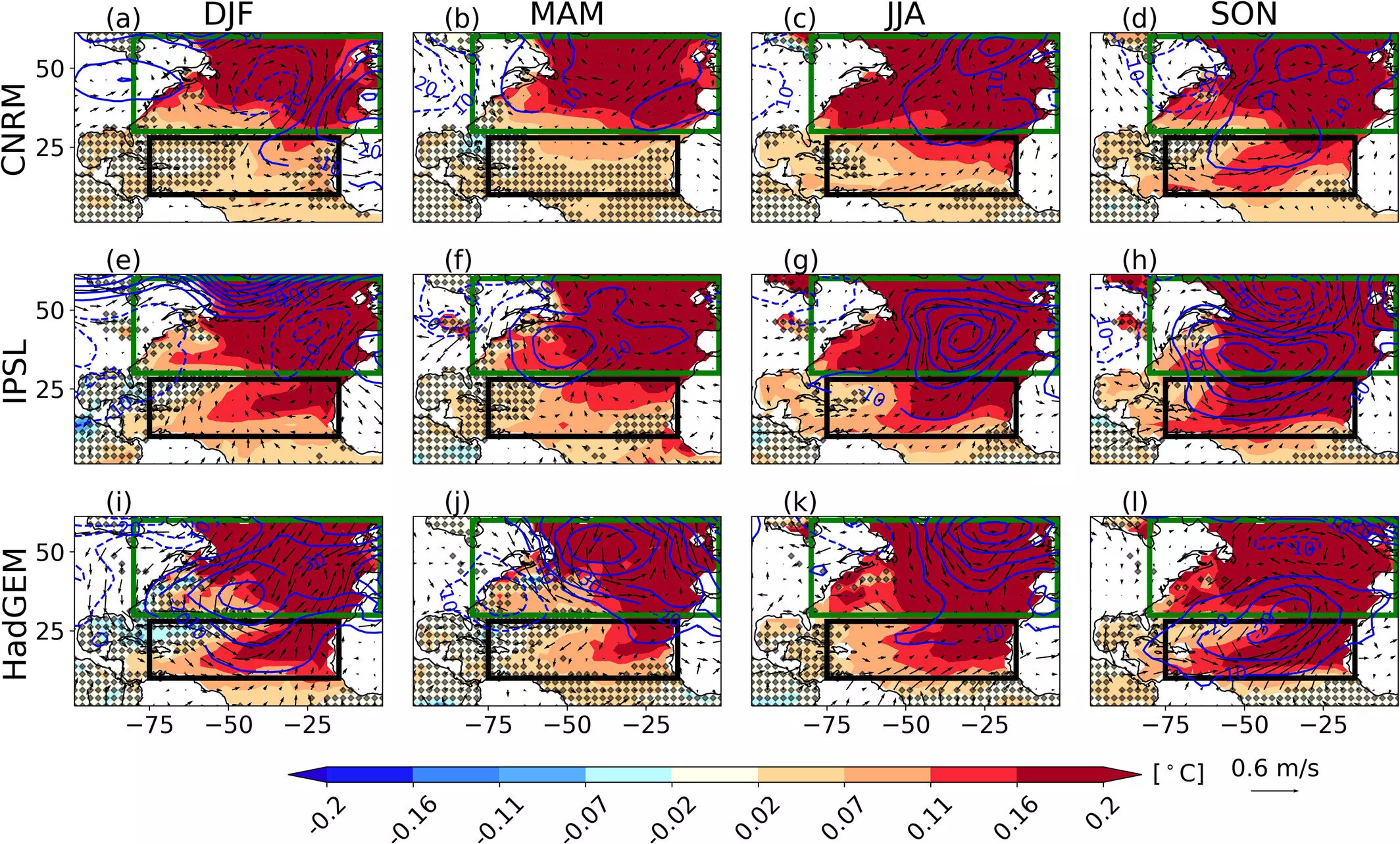Recent research has illuminated the critical connections between ocean dynamics and global climate, particularly through the lens of the Atlantic Multidecadal Variability (AMV). This phenomenon illustrates how the Atlantic tropics’ upper ocean layers engage in complex interactions that significantly influence long-term weather patterns worldwide. Insights from this study underscore the need for a reevaluation of the factors governing climate variability, emphasizing the pivotal role of the ocean’s mixed layer, where surface and subsurface conditions converge.
Atlantic Multidecadal Variability refers to the decades-long fluctuations in sea surface temperatures in the North Atlantic. This variability affects global weather patterns, influencing conditions ranging from hurricane activity in the Caribbean to rainfall patterns in regions like the Sahel. Researchers, driven by new evidence, are beginning to explore the depth of the upper ocean mixed layer as a more significant determinant of the AMV than previously understood. Historically, the primary focus had been on heat exchange between the atmosphere and the ocean, but emerging findings suggest that the thickness of the mixed layer plays a more crucial role in global climate dynamics.
Dr. Balaji Senapati, the study’s lead author, highlights a fundamental shift in thinking about climate patterns. The research reveals a crucial link between ocean temperatures, air circulation patterns, and the mixed layer’s properties. Specifically, when water temperatures in the extratropical North Atlantic rise above the norm, this warmth leads to a weakening of the trade winds. As these winds diminish, the mixed layer becomes shallower during the summer months. This phenomenon allows the energy from the sun to warm a thinner layer of water, intensifying heat distribution in the tropical Atlantic, creating an ongoing cycle of warming that can exacerbate climate variability.
Conversely, a transition to a cooler AMV phase results in a feedback loop that lowers temperatures across the Atlantic region. This compression of geological and meteorological data into models enhances our predictive capabilities regarding significant shifts in climate trends over time.
The implications of these findings extend beyond theoretical understanding; they signify essential changes necessary in climate modeling practices. Many prevailing models may overlook or inadequately account for the complexities involved in upper-ocean dynamics, resulting in inaccurate predictions of the AMV’s evolution and its broader impact on global weather systems.
By integrating the insights gained about the mixed layer’s influence into new climatological models, scientists can hope to refine their forecasts of climate trends, enhancing our ability to prepare for and mitigate the impacts of climate change. The advanced understanding of the ocean-atmosphere interplay adds a layer of depth to climate research, offering promising avenues for developing more effective environmental strategies moving forward.
The interplay between the ocean’s mixed layer and climate variability underscores the complexities that govern our planet’s weather patterns. As climatologists continue to delve deeper into these ocean processes, we can expect a shift in understanding that may enhance global preparedness in the face of inevitable climate shifts. The findings presented in this recent study not only highlight critical ocean dynamics but also pave the way for more accurate climate forecasting and increased strategic responses to climate change challenges.

